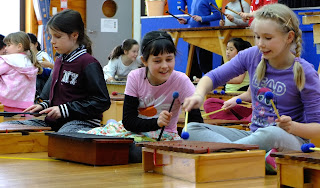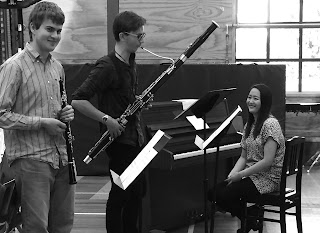Orff Schulwerk Music Education
Sing Say Move Play at Eastern Hutt School
Music Education through Orff Schulwerk

Everyone is a musical being: Doug Goodkin TED talk
Welcome!
Kia Ora and Welcome to my Teaching Blog.
This year I am joining Angela Campbell at Eastern Hutt School as an Orff Schulwerk music teacher. Eastern Hutt School is unique in the Wellington region to have a well established Orff Schulwerk specialist music programme, established and developed by Angela over the last 10 years. Angela has a wealth of experience in Orff Schulwerk, she has studied with Doug Goodkin in Salzburg and she completed her level 1 Orff training at the San Francisco school. I first began working with Angela 8 years ago when I was a general classroom teacher at Eastern Hutt School. I have since had three children of my own and have worked closely with Angela to develop my own Orff Schulwerk teaching as well as completing my own Orff Schulwerk training and study at postgraduate level. Music is a big part of my family life and I have used the Orff Schulwerk approach as part of my children's own music education. I will use this blog to share information and resources with teachers and parents and to share some of the students' music making. Thank you for taking the time to visit.
Marimba Playing

Drawing by Charlotte Prebble
Tuesday, 5 July 2016
Monday, 10 August 2015
Friday, 22 May 2015
Improvising conversation with Hari Coo Coo
Thanks Mrs Williams and C1 for this little video of our music time this week!
Tuesday, 19 May 2015
Hari Coo Coo
We are learning this lullaby from Nepal at the moment as we think about the earthquakes that have affected so many people. We have been singing and sending all our love and hope to the people in Nepal helping and being helped.
Monday, 18 May 2015
Year Two students playing some Jon Madin pieces
We have been having lots of fun with Jon Madin's pieces for marimba. We have been learning how to hold our mallets and use both mallets when we are playing. We have also been learning about what an "octave" is by playing some scale songs including "Can You Click Your Sticks", and "Pudding on the Hill" by Jon Madin and "C is for Crocodile" (By C-Change).
Year Fives working on "Yay" by Fraser Bruce
We have been working on this piece for only three weeks and there are some tricky rhythms we are mastering!
This piece is going to be performed by Auckland students as part of the Auckland Marimba Festival later this year. We are going to perform this piece with 'Mimosa', a professional chamber music group, as part of a NZ Chamber Music Residency programme at Eastern Hutt next term, very exciting.
Junior students having an "improvising conversation", creating question and answer melodies on the pentatonic scale. We have been talking about how we can communicate with each other using gesture and watching each other closely to know when it is our turn to "speak". We have also been talking about how when we create an answering melody we work our way back to the home note so the phrase sounds complete.















